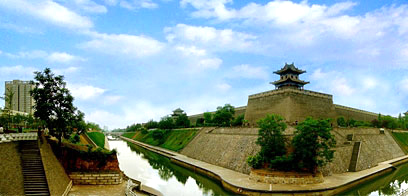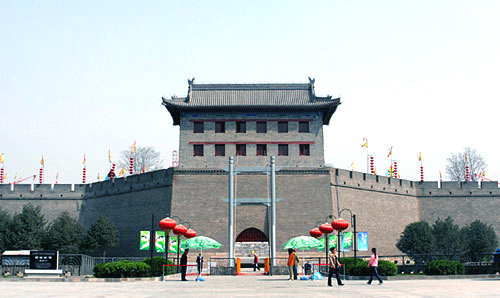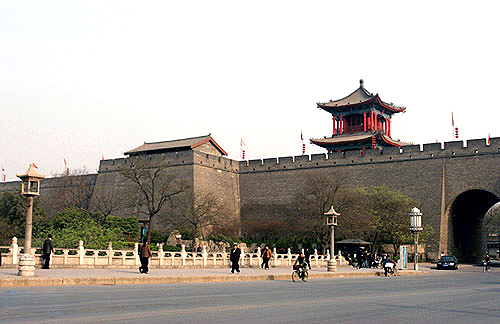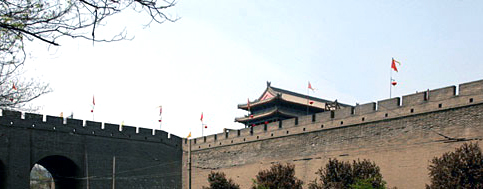
The first landmark visitors will encounter in Xi'an is the city wall, which stretches round the old city. The northern side runs parallel to the railway. Xi'an was originally a walled city, and even today the wall is considered a landmark dividing the city into the inner part and the outer part. The city wall is massive - tall, long and thick. The South Gate and North Gate are the two main entrances to the inner city. The city itself is neatly arranged along the city wall.

The history
Xi'an City Wall was erected in the 14th century, under the regime of Emperor Zhu Yuanzhang. When Zhu Yuanzhang captured Huizhou, long before the establishment of the Ming Dynasty, he was admonished by a hermit named Zhu Sheng, who told him to "build high walls, store abundant provisions and take your time in proclaiming yourself emperor." This advice Zhu Yuanzhang heeded. Once the whole country was unified, he sent orders to the local governments to build city walls on a large scale. Zhu assured that "out of all the mountains and rivers in the world, the area of Central Qin is the most strongly fortified and strategically impregnable." The current city wall is an enhancement of the old Tang Dynasty structure, as a result of the emperor's wall building campaign.

The structure
The first city wall of Xi'an was built of earth, rammed layer upon layer. The base layer was made of earth, quick lime, and glutinous rice extract, tamped together. It made the wall extremely strong and firm. Later, the wall was totally enclosed with bricks. A moat, wide and deep, ran around the city. Over the moat, there used to be a huge drawbridge, which would cut off the way in and out of the city, once lifted.

The watch Towers
The watch tower is located on each of the four corners of the wall. The one at the southwestern corner is round, probably after the model of the imperial city wall of the Tang Dynasty, but the other three are square-shaped. On top of the watch towers there is a corner rampart, higher and larger than the ordinary ramparts. This shows the strategic importance of the corners of the city wall in war times.